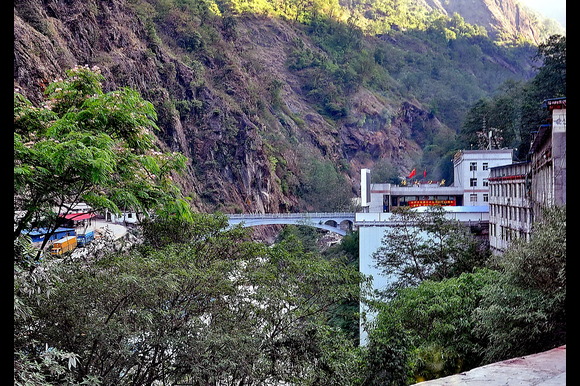
By Royonx - Wikipedia
At least eight people have been confirmed dead and more than two dozen remain missing after the Bhote Koshi River flooded near the Nepal-China border, washing away the iconic “Friendship Bridge” that connects the two nations, officials said Tuesday.
Though the immediate area did not experience heavy rainfall, experts believe the flood was likely triggered by an overflowing glacial lake in Tibet, following days of intense rain. Nepalese authorities are working with Sentinel Asia — a satellite-based disaster response initiative — to investigate the precise cause of the flooding.
Nepalese police have so far recovered eight unidentified bodies and rescued 57 individuals. However, the search continues for at least 20 people reported missing in Nepal, including six Chinese workers and three police officers, according to Nepal’s National Disaster Risk Reduction and Management Authority (NDRRMA). Meanwhile, Chinese state media have reported 11 missing on the Chinese side of the border.
The Chinese nationals were working on the Inland Container Depot — a cross-border trade facility currently under construction with Chinese assistance — located roughly 80 kilometers north of Kathmandu. Arjun Paudel, a senior administrative official in Nepal’s Rasuwa district, said the floodwaters also swept away cargo containers carrying Chinese imports. “There is a big loss of property and we are collecting details,” he said.
The destruction of the Friendship Bridge has severely disrupted trade between the two countries, particularly in the Bhote Koshi River region, a critical commercial transit corridor.
China, which has significantly increased its investment footprint in Nepal in recent years, is also grappling with widespread flash floods and heavy rainfall within its own borders. More extreme weather is expected in the coming days as a tropical storm approaches.
Meanwhile, neighboring Pakistan is facing its own monsoon-related crisis. Since June 26, at least 79 people have died in rain-related incidents including landslides, flash floods, and house collapses, according to Pakistan’s National Disaster Management Authority (NDMA). The dead include 38 children.
The NDMA has issued new alerts for potential flash floods and glacial lake outburst floods in the northern regions of Gilgit-Baltistan and Khyber Pakhtunkhwa, where rising temperatures and an incoming weather system pose increased risks.
As South Asia confronts a surge in climate-linked disasters, the events unfolding along the Nepal-China border and across Pakistan underscore the growing vulnerability of the region to extreme weather and the urgent need for international cooperation on climate resilience and disaster preparedness.




